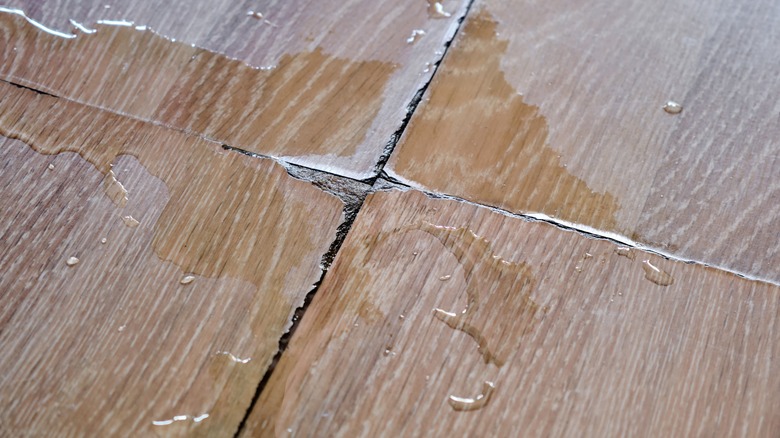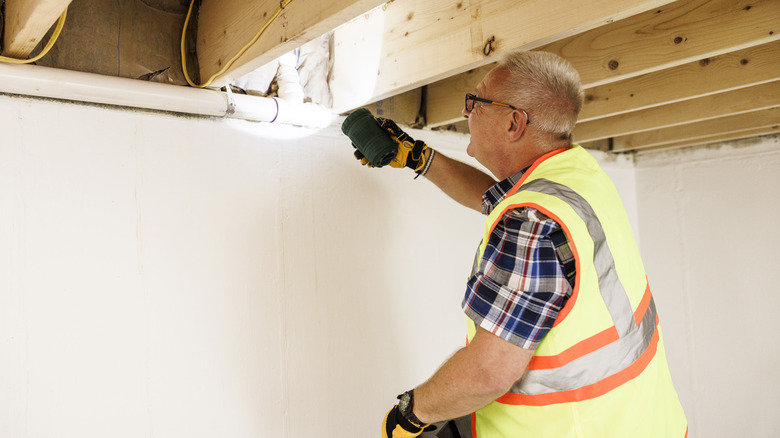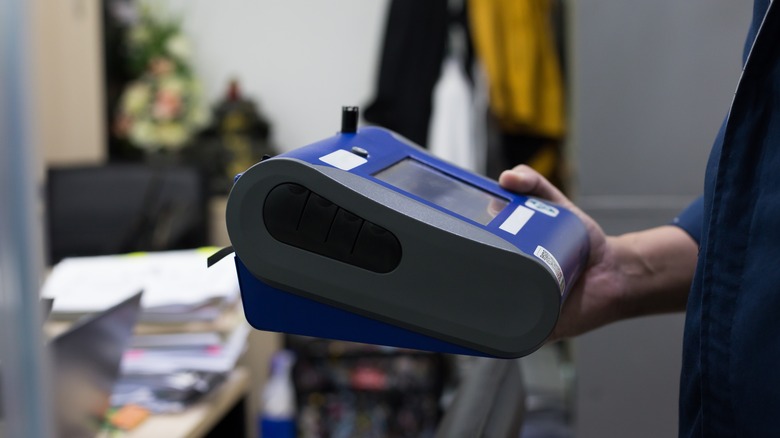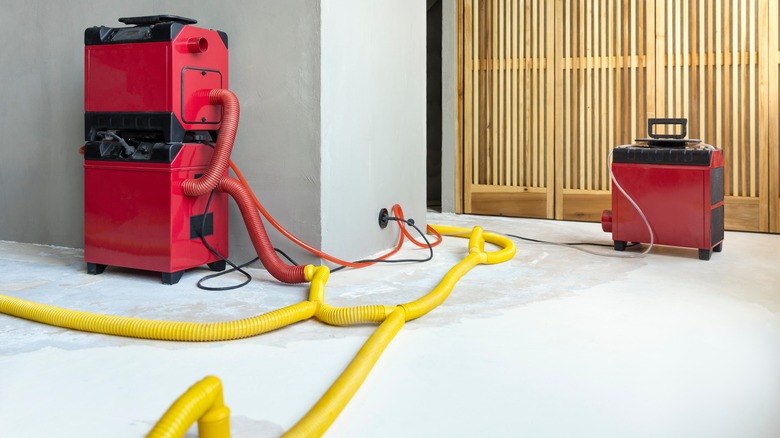Is Mold Growing Underneath Your Flooring? Here's What To Look For To Find Out
We've all seen the photos of mold creeping up walls and across ceilings in what appear to be buildings that are long abandoned, apparently for good reason. The photos are alarming, and the problem in these homes is perfectly clear. No one has an eight-square-foot section of moldy drywall in their dining room without wondering if they have a mold problem. But what about floors?
It seems reasonable that floors, as much as ceilings and perhaps more than walls, would be a place where water collects and mold thrives, but we don't see it as often. Sometimes, sorry to say, it's because flooring is basically hiding the mold growth from view. You have to look a little more carefully for the signs and causes of mold under flooring.
Why would you even be suspicious that mold is having a block party under your engineered hardwood? It's partly about your senses, and partly about common sense. If you smell musty odors, notice an unexpected insect infestation, experience unexplained allergy-like symptoms, or notice water stains or warping, buckling, peeling, or discoloration of your flooring, you should suspect mold and its ally in destruction, water intrusion. Which brings us to the part about common sense: If you've had a leak, standing water from any cause, high humidity levels, or any other inappropriate moisture in the area, you should suspect the presence of mold. Given the right temperature and moisture levels, it's almost a given, and cleaning and drying the wet wood in your house is necessary.
How to figure out if you have mold under your floors
Getting a look at an area where you suspect mold growth is occasionally as simple as inspecting the subfloor from a basement or crawlspace below, but to be sure, you ultimately need to remove some of the flooring and peek beneath. This process varies from flooring type to flooring type, and you can generally learn how to do it by researching how to replace a section of the flooring type you have. For hardwood flooring, you'd typically cut away the old board (leaving the tongue attached to the floor), have a look, then replace the removed board (with a new one if necessary) after trimming away its tongue and enough of its groove to fit into place. Be sure to pull back any underlayment that might be under your flooring, since it's possible to have mold above or under it (or in both places).
How much mold is too much? Because it requires moisture to grow, any visible mold should be taken seriously and dispatched promptly. For a very small amount of mold that developed under flooring where a glass of water was once spilled, the only necessary step might be to stop spilling water there. But until you understand the source of the moisture, any mold is too much mold. The goal is ultimately to kill mold on your wood subfloor or concrete slab, and on the flooring itself, and you are wasting your time if it's just going to get wet again.
How alarmed should you be if you find mold?
The CDC describes four classes of people who are likely to be affected by mold: sensitized individuals who experience minor symptoms, those with allergies to mold or asthma, and those who are immune-compromised or suffering from chronic lung disease. But a cottage industry has grown up around mold testing and remediation that — you may be surprised to learn — scientists and public health professionals say is unhelpful. The CDC is unequivocal about mold testing, and adopts a distinct tone of irritation when discussing it: "You do not need to know the type of mold. If mold is growing in your home, you need to clean up the mold and fix the moisture problem." The organization adds, "There are no set standards for what is and what is not an acceptable quantity of different kinds of mold in a home."
Why the note of annoyance? Misinformation about mold drifts around the internet like spores on the wind, often wrapped in dubious concepts like "sick building syndrome" (SBS) and "toxic mold syndrome." But there is no proof of a link between "black mold" and the symptoms popularly labeled "toxic mold syndrome," and a UC Davis study demonstrates that the concentration of mold toxins (mycotoxins) required to make people sick is, in their words, "Not realistically achievable in most of the cases in which mold toxicity is blamed for illness." That study concludes that, "With the exception of allergies and asthma, there are no proven, long-term, ill effects from exposure to mold."
That doesn't mean you should ignore mold. You still need to take it seriously and treat it. But don't feel overwhelmed if you find it, either.
Dealing with mold under your flooring
Mold is destructive and for some, potentially dangerous. Fortunately, pretty much everyone has the same prescription for a home with a mold problem: Stop the moisture and clean up the mold. However, if you have a mold allergy or sensitivity, or a compromised immune system, you'll need to find someone else to do this work for you.
The non-negotiable first step is to identify and eliminate the cause of the moisture, be it a leaky pipe, leaking window or roof, a dripping AC drain line, or so on. The cleanup itself starts with removing the flooring. This is the work most likely to stir up mold spores, so it's the part that can benefit most from personal protective equipment and precautions to keep an unusually large amount of spores from spreading throughout your home. This usually involves sealing off doorways and exhausting air through a window with a fan, but it can be a much more involved process.
Dry out the subfloor with whatever combination of fans, dehumidifiers, and cursing works for your situation. Then remove the mold using common household cleaners or a solution of one cup of bleach to a gallon of water and dry the affected material immediately. Repeat if necessary, and discard anything that can't be cleaned and dried within 48 hours. If your subfloor has been affected, take careful note of the condition of the wood and replace any subfloor or joists that have deteriorated.



